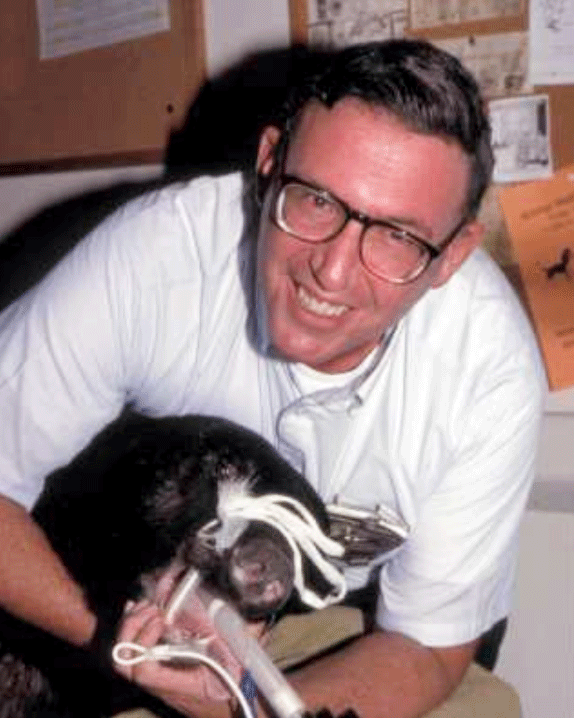
Norman Ackerman, D.V.M. died on January 13th, 2008, due to complications from longstanding cardiac problems.
Born in October 1942, Norman grew up in Miami, FL. He attended The University of Georgia pre veterinary program until 1962 and then entered the veterinary professional program at Auburn University where he received the degree of Doctor of Veterinary Medicine in 1966. After a brief stint as an associate veterinarian in a North Miami veterinary hospital, Norman joined the United States Air Force and served as base veterinarian at Misawa AFB in Japan, and later at Takhli AFB in Thailand.
Norman returned to the United States and entered the small animal medicine and surgery Internship program at the University of Pennsylvania in 1969. In 1971 he entered the veterinary radiology residency program at the University of Missouri where he was mentored by Dr. Lou Corwin. He was certified by examination as a Diplomate of the American College of Veterinary Radiology in 1974. Norman remained on the faculty at Missouri until 1976 at which time he joined the radiology department at the University of California, Davis.
In 1979 Norman returned to Florida to take a position in the Department of Radiology at the University of Florida. The next few years would see Norman serve with distinction as a faculty member, clinician, and teacher. During this time, he was also actively involved with the American College of Veterinary Radiology (ACVR), serving on many committees and eventually serving as the president in 1981. By 1985 he had added 34 publications, five book chapters, and three books to his already extensive list of accomplishments. Because of his impressive academic record, Norman was awarded Full Professorship in the Department of Radiology in 1986.
Norman retired from the University of Florida in 1994; however, he continued his work in radiology with a part time position in a veterinary specialty hospital in Louisville, Kentucky. He also maintained an active role in the ACVR, serving many tours of duty on the demanding and time‐consuming Examination Committee. In the year 2000, Norman moved to Huntsville and continued his work as a radiologist accepting film referrals from multiple hospitals around the southeast, while continuing to find time to maintain a presence on the ACVR Examination Committee. Until his untimely death, he was an active locum in Radiology at the University of Florida Veterinary Medical Teaching Hospital and the College of Veterinary Medicine at Oregon State University.
I knew Norman to be an intensely private person, but a man of immense character and integrity. A man dedicated to his family, teaching, and promoting excellence in his profession. He was an accomplished photographer with a darkroom in his home, which served as a basis for his superb understanding of the photographic and radiographic process of diagnostic film production. His manipulation of X‐ray film in the “hand tanks” was uncanny, allowing us to routinely enhance images in a way that the automatic film processors in the department could not. He tricked film with scatter radiation and heat, and intensifying screens with cold to make them behave outside their normally expected envelope so that we could make images of the equine spine and pelvis with ridiculously small, 20 Ma X‐ray generators. The laborious chore of manual subtraction of our angiographic images was a treat to Norman.
As his colleague, I found Norman to be a concerned teacher of veterinary students and residents of all disciplines who were dedicated to writing and publishing clinically pertinent material to fill in the gaps of the literature available to his mentees. He was generous with first authorship and promotion of the ACVR journal. Norman is sited with over 45 publications in Veterinary Radiology and Ultrasound alone, but in most of those he deferred to the young aspiring resident or junior colleague to be the first author. Even with his time consumed by writing, teaching, and college governance, he found time for the ACVR, to which he was truly dedicated. He genuinely felt that the organization that had afforded him such a rewarding career should be vigorously supported so that the vision of the founding radiologists could be perpetuated.
Most of you do not know the breadth and depth of this man, and for that I am sorry. But you should understand that because of his quiet but intense dedication to veterinary radiology, in some part, all of us in this profession have been touched by the life and work of Norman Ackerman.
His wife, Lourdes Corman, M.D., a son and a daughter, survive him.